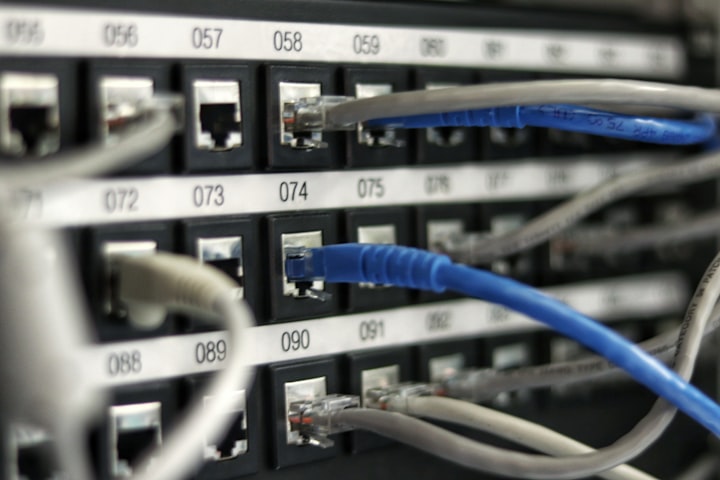
SSH –Secure Shell
1. It is a protocol which is allow us to securely access the remote machine.
2. It is commonly used to manage web server, remote backups and other networked systems.
FTP – File transfer protocol
1. FTP is a protocol which is used for transfer the files between the computers on public or private network.
2. It is typically used to upload and download a files to a web server or other remote machine.
3. We can transfer all type of file using FTP
4. FTP is not consider as secure as HTTPS, SCP, because all the data are transfer as plain text
5. So there a possibility of middle-man-attack
DHCP – Dynamic Host Configuration Protocol
1. It is a network protocol that allows a server to assign an IP address automatically to devices on a network.
2. It eliminating the need for manual configuration.
3. It improves network efficiency by reusing the IP address and also assign other network information like subnet mask and default gateway.
4. It simplifies network management and human errors.
5. DHCP Discovery: A device sends a broadcast message requesting an IP address.
6. DHCP Offer: The DHCP server responds with an available IP address and network configurations.
7. DHCP Request: The device selects an offered IP address and requests it be assigned.
8. DHCP Acknowledgment: The DHCP server receives the request and assigns the IP address to the device, sending an acknowledgement message to confirm the assignment.
IP – Internet Protocol
1. IP sets the rule that govern how data is transmitted over the network such as internet.
2. It is responsible for routing packets of data (also known as “datagrams”) from one device to another on a network.
3. It works to assign a unique IP address to each device connected to a network. This address servers device Identification and location on the networks
4. When a device wants to send a data to another device, the data is packed into a packet and adds the destination IP address to pack, so the packet is routed device to device based on the IP address until it reaches the intended recipient.
5. Each device on a network that examines the destination IP address of the packet and decides whether to forward the packet to next device or to deliver it to the intended recipient.
6. IP comes in two versions IPV4 and IPV6
7. IPV4-> it uses 32 bit address and is still widely used but it running out of available address.
8. Two types of IP Public IP –WAN , Private IP – LAN (0.0.0.0 to 255.255.255.255)
9. Public IP Starting Range Ending range
10.0.0.0 10.0.0.255
10.0.1.0 10.0.1.255
10. Once it reaches 255 pervious bit will increase and goes on.
1. Class A
10.0.0.0 to 10.255.255.255
2. Class B
172.16.0.0 to 172.31.255.255
3. Class C
192.168.0.0 to 192.168.255.255
11. Class A, Class B, and Class C are Private IP's
If you assign a public IP to a device, that public IP will assign to a private IP, thus we can't just assign a public IP without a Private IP. 12. All the devices must have the private IP inside this range.
12. IPV6->it uses 128 bit address which allows much larger number of unique address compare than IPV4
TCP/IP – Transmission Control Protocol/Internet Protocol
1. It is a set of networking protocol that are used to connect a device on a network such as internet. It is used by all the devices connected to the internet to communicate each other.
2. TCP part - TCP/IP is responsible for establishing a reliable connection between two devices and ensuring the data is transferred correctly.
3. It break the data into small packets and numbering them then send to destination device. The destination device uses the pack number to reassemble the packets to original data.
4. It includes flow control and error control mechanism to ensure that data is transferred accurately and efficiently.
5. IP –part TCP/IP is responsible for routing the packets of data from one device to another on a network. It works by assigning a unique IP address for each device connected to a network.
6. This address servers device Identification and location on the networks
7. It is a standard protocol suits to all devices such as computer, servers, smartphone, routers.
Networking Protocol:
A networking protocol is a set of rules and standards that govern the communication between devices on a network. These protocols define how data is transmitted, including the format of the data, how it is addressed, and how devices should handle errors or lost data. Networking protocols are used to ensure that different devices and networks can communicate with each other seamlessly and efficiently
Web service:
1. A web service is a method of communication between two electronic devices over the network. It uses a protocol such as HTTP or SOAP to transfer a data in the form of XLM or JSON Massages.
2. These massages are typically sent and received using a software interface know as API (Application Programming Interface)
3. Web services are typically used to provide access to data or functionality on a remote server, that allowing a different application to communicate with each other.
4. For example Web service may provide weather information, stock price or even allow user to purchase items online.
5. Web service can be accessed using different programming languages and they are platform independent, which means that a web service can developed on one platform can be easily consumed by client application running on another platform( web service can be developed on one platform and it can easily consumed by another platform).
6. Web service can be two types: SOAP and REST.
7. SOAP-(Simple Object Access Protocol) is an XML based protocol
8. REST-(Representational State Transfer) is an architectural style for building a web service that uses HTTP for data transfer.
Apache 2:
1. Apache HTTP Server commonly referred as Apache
2. It is a free and open source web server software that is developed and maintain by apache software foundation.
3. It is widely used to serve a web page on the internet and It can also use to host web application and APIs.
4. Apache is notable for robustness, flexibility, and security
API:
1. Application programming Interface (API) is a set of rules and protocols that allows different software application communicate each other.
2. API act as an intermediary between different systems, so data and functionality exchange is consistent and predictable manner.
Usage:
1. Access and retrieve data from other website or services, such as retrieving whether information and stock price.
2. Allow third party developer to use the functionality of the system such as the ability to post social media platform.
3. Connect different system within an organization such as connection front-end- e-commerce platform with a back-end inventory management system.
4. Expose data and functionality of a software application to other system such as integrating a CMR system with a billing system.
Server
1. Server is a computer or system that provides resources, data, service or programs to other computer or system known as clients, over a network.
2. Servers are used to manage, store, process data and can be used for verity of purpose such as hosting websites, managing database, running email system and providing authentication or authorization for network access.
3. There are many type of server such as web server, application server, database server, file server, game server.
4. They can be hardware or software based and can run verity of operating system like windows, Mac, Linux
About the Creator
Martian
Fantasy - Writer
Secrets - Teller
Information - Provider
Sometimes - Teacher
Awareness - Maker
Come along with me as I investigate the limitless possibilities of Everything. Together, let's make something spectacular.






Comments
There are no comments for this story
Be the first to respond and start the conversation.